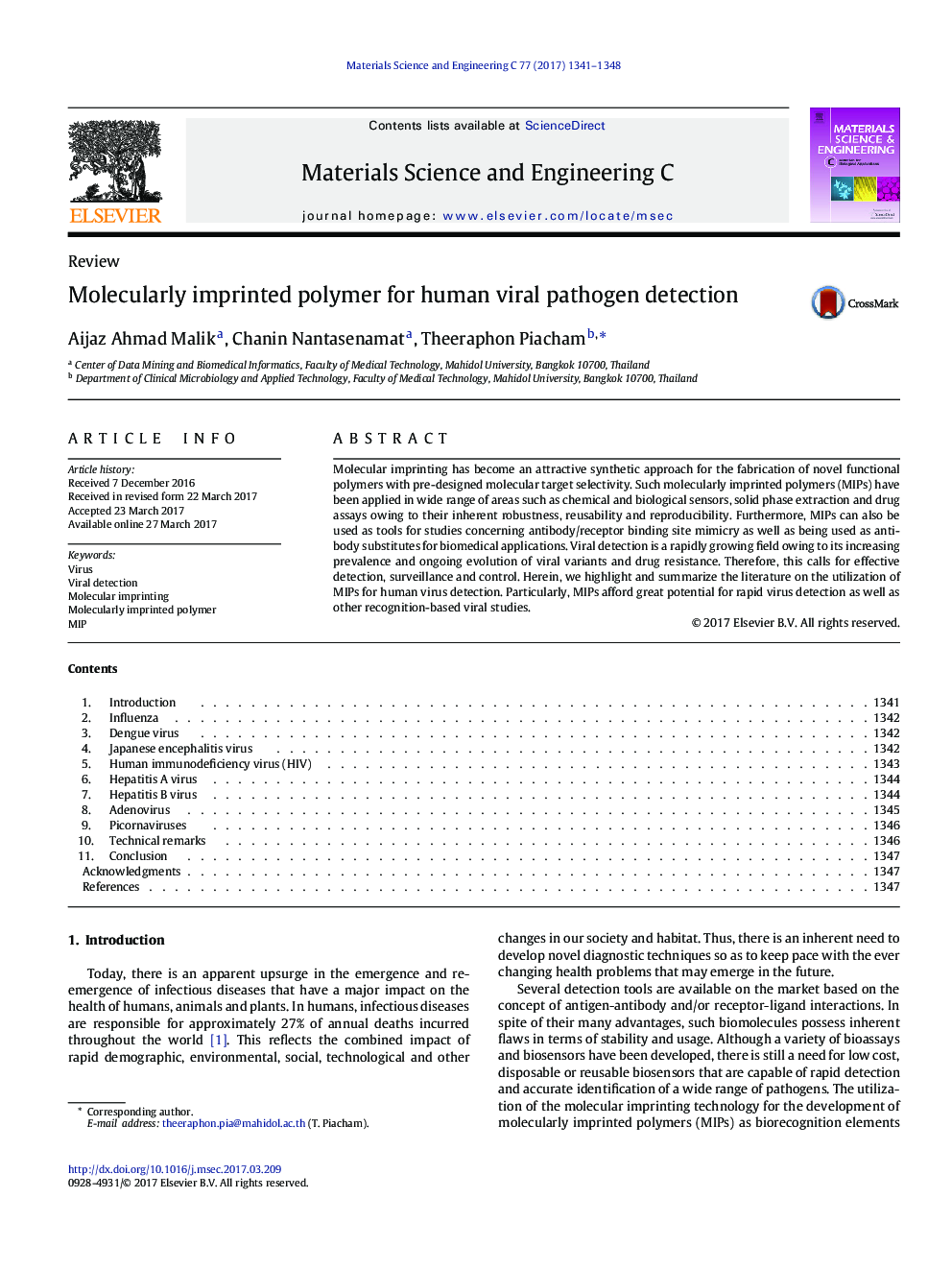| Article ID | Journal | Published Year | Pages | File Type |
|---|---|---|---|---|
| 5434490 | Materials Science and Engineering: C | 2017 | 8 Pages |
â¢Current state of the art of MIPs for rapid detection of human virus is reviewed.â¢MIPs provide physicochemical robustness as an attractive recognition media.â¢MIPs afford lucrative applicability for detection of viral subtypes.â¢MIPs can also be used in the screening of inhibitors for drug discovery.â¢Technical perspectives for using MIPs in viral-recognition studies are highlighted.
Molecular imprinting has become an attractive synthetic approach for the fabrication of novel functional polymers with pre-designed molecular target selectivity. Such molecularly imprinted polymers (MIPs) have been applied in wide range of areas such as chemical and biological sensors, solid phase extraction and drug assays owing to their inherent robustness, reusability and reproducibility. Furthermore, MIPs can also be used as tools for studies concerning antibody/receptor binding site mimicry as well as being used as antibody substitutes for biomedical applications. Viral detection is a rapidly growing field owing to its increasing prevalence and ongoing evolution of viral variants and drug resistance. Therefore, this calls for effective detection, surveillance and control. Herein, we highlight and summarize the literature on the utilization of MIPs for human virus detection. Particularly, MIPs afford great potential for rapid virus detection as well as other recognition-based viral studies.
